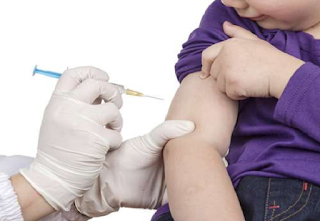 About one in six suffering from rheumatoid arthritis (RA) suffer from depression. Common
symptoms of depression, such as fatigue, muscle pain and difficulty to
complete activities of daily living (eg, dressing, cooking, cleaning),
can mimic the symptoms of an epidemic of arthritis. It is also possible that depression can contribute to a relapse.
About one in six suffering from rheumatoid arthritis (RA) suffer from depression. Common
symptoms of depression, such as fatigue, muscle pain and difficulty to
complete activities of daily living (eg, dressing, cooking, cleaning),
can mimic the symptoms of an epidemic of arthritis. It is also possible that depression can contribute to a relapse.So unravel the relationship between depression and RA flare is a challenge.
Recently, a team of researchers set out to do just that. They studied 379 people with RA who are already enrolled in a trial comparing different drugs for the treatment of arthritis. Participants were asked to describe their feelings using one of the following sentences: "I am not anxious or depressed", "I am moderately anxious or depressed" or "I am very anxious or depressed" This evaluation was administered using standard scales used. to measure whether RA symptoms are getting better or worse or remaining stable (doctors call the disease activity).
The researchers found that participants who reported more anxiety and depression scores had higher disease activity. They also reported more tender joints and, when asked about your symptoms, they rated their disease as superior activity. At the same time, depression and anxiety seem to have no effect on the number of swollen joints found during physical examinations or the level of inflammation in the body, as measured by a blood test called ESR (also known as the speed sedimentation).
This is not to the first study to observe an association between depression and anxiety and activity of RA. In another recent study of 275 people with RA, the researchers measured the activity of disease and the symptoms of depression in the same visit. Here, as in the previous study, depression was associated with increased disease activity and the inability to achieve clinical remission, even with treatment. In another study involving 31 RA patients, depression and mood, they were assessed several times a day for a period of one week. Patients who reported more depressive symptoms also reported more pain and articulate during the sensitivity of the study period.
These studies suggest that depression may aggravate RA disease activity and even reduce drug benefits with rheumatoid arthritis. But the results are not conclusive and more studies need to understand the complex relationship between RA and depression. For example, another explanation for these results is that patients with RA more tender joints and less able to carry out regular activities are more depressed because your illness is worse.
Another problem is that we normally use scales to measure disease activity in RA may not be as accurate when used with depressed patients. Despite the uncertainties, these studies make the important point that people with RA need to be educated about and planned for signs of depression and the appropriate resources data and processing needed. In addition, physicians should consider the depressive symptoms in the assessment of disease activity.
More importantly, if you have rheumatoid arthritis and begins to experience symptoms of depression - fatigue, feeling blue, loss of interest in usual activities, tasks difficult to perform, sleep disorders - or you feel that RA drugs do not work as well as general, be sure to tell your doctor.
By: Bonnie Bermas,MD.
























